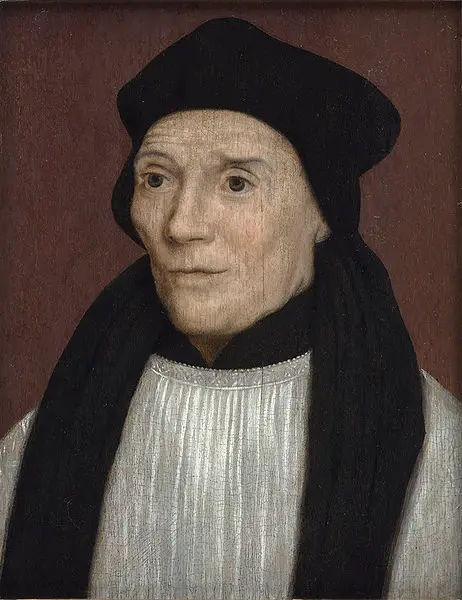Richard Neville was the son of Sir Henry Neville who died at Edgcote in July of 1469 and his wife Joan, daughter of John Bourchier, 1st Baron Berners. He is an interesting Tudor figure because he saw the beginning of the reign of Henry VII, being part of the War of the Roses and lived up until Henry VIII's 'Great Matter.'
Richard Neville inherited his title and lands when just a baby in 1469, the principal seat being Snape Castle in Richmondshire, following his grandfather George Neville's death. However, his great uncle, Thomas Bourchier, who was a cardinal and later Archbishop of Canterbury, purchased the wardship of Richard and his marriage in May 1470 for £1000. Still, Richard's lands remained the property of the crown. Not much is known about the early life of Richard Neville, but we do know that he was knighted in January 1478.
Richard Neville is perhaps best remembered as a military man, born and raised in a tumultuous time in English history: the War of the Roses. However, Richard Neville seemed to side with Henry Tudor over Richard III, which is interesting considering who his father-in-law was. In around 1490, Richard Neville married Anne Stafford, daughter of Sir Humphrey Stafford. Humphrey Stafford was a staunch supporter of Richard III, and following his defeat at the Battle of Bosworth, Stafford and Francis Lovell fled to Colchester. In 1486, they attempted to stir up rebellion against Henry VII, with Stafford trying to stir up support in the Midlands and Yorkshire. However, the rebellion collapsed and upon failing to be gained sanctuary at Culham, Stafford was executed at Tyburn in July 1486.
Richard Neville never entered into this rebellion or supported the stance his deceased father-in-law had taken, choosing to staunchly support Henry VII, supporting him in battle in 1487 at the Battle of Stoke. He also served with the army in the north after the Earl of Northumberland's assassination in 1499 and served with Henry VII's forces in Brittany in 1492. Richard also attended the trial of Perkin Warbeck in 1499 and in 1513 he accompanied the Earl of Surrey at the Battle of Flodden. He was also summoned by the Earl of Shrewsbury in September 1522 regarding potential war with the Duke of Albany, highlighting his military prowess in his peers' eyes.
However, Richard Neville was not just a military man but also served the crown as a courtier and as a Justice of the Peace in the Yorkshire Ridings from 1493 and Westmorland from 1503. He also was among the courtiers who escorted Margaret Tudor between Tadcaster and York on her journey north to Scotland to marry James IV. In 1515 Richard Neville was also present at a momentous occasion in Westminster Abbey when Thomas Wolsey was made Cardinal.
In 1530 Richard also signed the petition to Pope Clement to support King Henry VIII's divorce from Katherine of Aragon. However, he died before he would ever know the result of this petition, passing away in December 1530. He is buried in the Church of St. Michael at Well, North Yorkshire.
by Georgia Whitehead.
Georgia completed her masters in Classics at the University of Edinburgh. Academically, Georgia is interested in early Christianity, with her master's thesis focusing on "The Male Gaze and Self-Representation in Female Christian Narratives". In addition to her interest in ancient history, she has always been an avid lover of the Tudor era, drawn to the magnificence of the Tudor courts and the larger than life characters. She is particularly interested in The Reformation, Christianity and the shifting sands of ecclesiastical politics in this period and also has a keen interest in the lives of Tudor women. It is Georgia's ambition to become a writer, perhaps publishing her own Tudor novel one day.
Georgia also runs a history blog and instagram page called Historia Mundis.


He’s my 15th great grandfather!
I love learning about my family history and on top of that knowing that my ancestors were a part of the Tudor period which I also love and is my favorite time period and that they might’ve even met the people I like from this time period is INSANELY cool.
Thanks for sharing 🙂
My 13th great gramps.